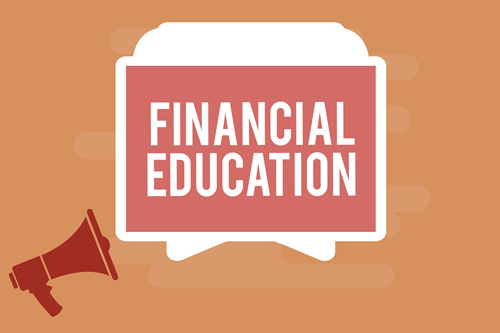Effective and accessible financial education has historically been absent in U.S. schools. Outdated instructional practices and a lack of standards have made it difficult for teachers to easily incorporate this crucial topic in the classroom.
According to a 2016 study by LendEDU, more than half of 18- to 24-year-olds wish they’d taken a personal finance course in high school. Unfortunately, not every state has a requirement that students take some form of a financial education course prior to graduating.
As the business education teacher at Niles North High School (NNHS) in Illinois, I’m passionate about ensuring that every child has access to an equitable and effective financial education curriculum. NNHS is one of the most diverse high schools in Illinois, with students who come from almost every corner of the globe and speak more than 70 different languages. I feel lucky that my state requires every student to complete a consumer education course, and I know the importance of providing a course that is up-to-date and applicable to the real world.
After 20 years of teaching, I’ve identified three key elements to an equitable, realistic financial education program into the classroom. Students need to know certain facts about how our financial system works and they need to have healthy and productive attitudes about money and finance, but most of all they need to learn how to make smart financial decisions. Incorporating the following three elements will help students become smart and critical consumers and achieve financial wellbeing. All students, regardless of background, can benefit from a high-quality financial education.
3 elements to a high-quality financial education program
Having a pedagogically sound approach
Students need more than just information to develop financial know-how. In previous years, I focused solely on topics out of a textbook. Now, I’ve implemented finEDge, a new style of financial education curriculum created at UChicago. This curriculum uses modules that introduce key financial topics, walk through the decision-making processes related to these topics, and create productive attitudes about finance.
We were attracted to how the program focuses on providing an opportunity for every student to gain financial literacy skills, regardless of race, gender, sexual orientation, or socioeconomic background. Reflection is an integral part of the curriculum; students are given the opportunity to participate in simulations and scenarios in which they need to think critically and build financial decision-making skills.
Many financial curricula focus exclusively on the model of teachers providing content knowledge rather than allowing students to acquire and construct their own way of working through complex, everyday situations. I’ve learned that by first considering pedagogy, I’ve been able to transform my financial courses from “old school” to something more flexible and powerful.
Exchanging the old for the new
Students are facing a financial marketplace that is dynamic, sophisticated, and digital. To deal with a constantly changing economy, I work with students to help them build critical-thinking skills that can support them through the unknown.
At the start of the semester, students create a financial-wellbeing map that they’ll use throughout the year. From there, every part of the curriculum is woven together into one cohesive life plan.
I’ve found collaboration to be incredibly useful for teaching consumer finance. I regularly teach short, integrated activities where students work together through lessons, which is interesting to observe since every student has a unique financial background.
For example, in one of the first modules, I have students write down items that they deem essential for financial wellbeing and then compare these with a partner. Then, as a group, we discuss discrepancies and how factors such as income, stability, and liabilities can impact individual viewpoints on wealth.
When we have students reflect, we are helping them build critical research skills that benefit them in navigating the inevitable challenges that will come up in their lives after graduation. Exchanging the old way of delivering information to a new way that helps to develop fundamental attitudes and skills is an incredibly important characteristic of finEDge.
Personalizing the experience
Our financial system doesn’t provide every student with the same choices and opportunities. Many traditional financial education curricula don’t account for this, so they are automatically ineffective for most students. In order to equip students with sound financial literacy skills, it’s important to first consider whether the curriculum you’re teaching addresses barriers to financial success.
I’ve had students whose parents have discussed finances with them from a young age and students who haven’t had any exposure to personal finance whatsoever. Many homework assignments in finEDge require students to discuss various financial situations with family and peers, and I’ve found that this is helping to bridge the gap between home and school.
Although a financial education class is only a small part of a student’s life, it is absolutely crucial that we give students equal access to the knowledge and resources they need to navigate their individual economic environments and work towards success in school, work, and life.
- Motivating students using the Self-Determination Theory - April 17, 2024
- Michigan Virtual’s statewide workgroup releasing AI guidance for K-12 educators - April 17, 2024
- 5 obstacles AI can help schools overcome - April 16, 2024

